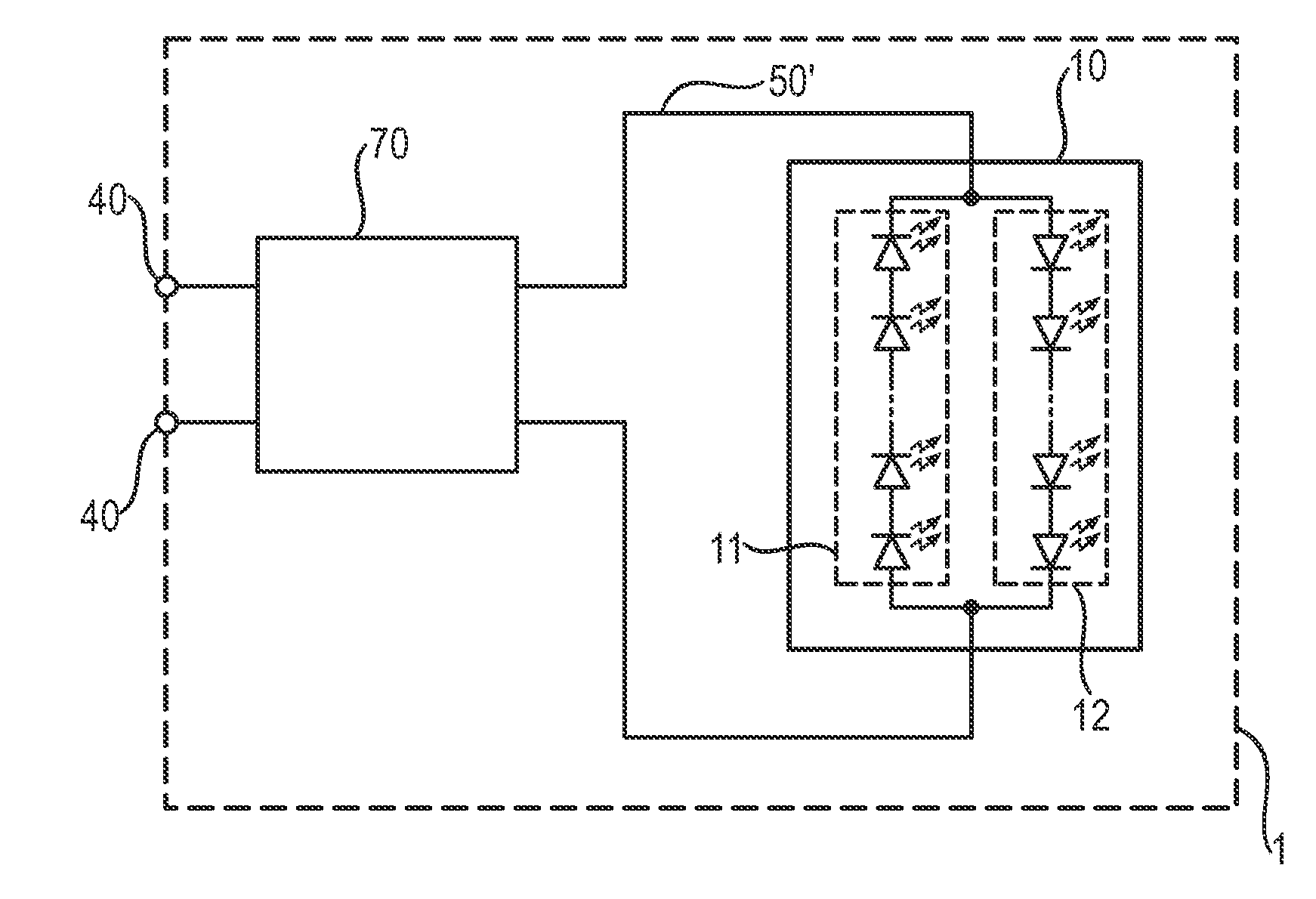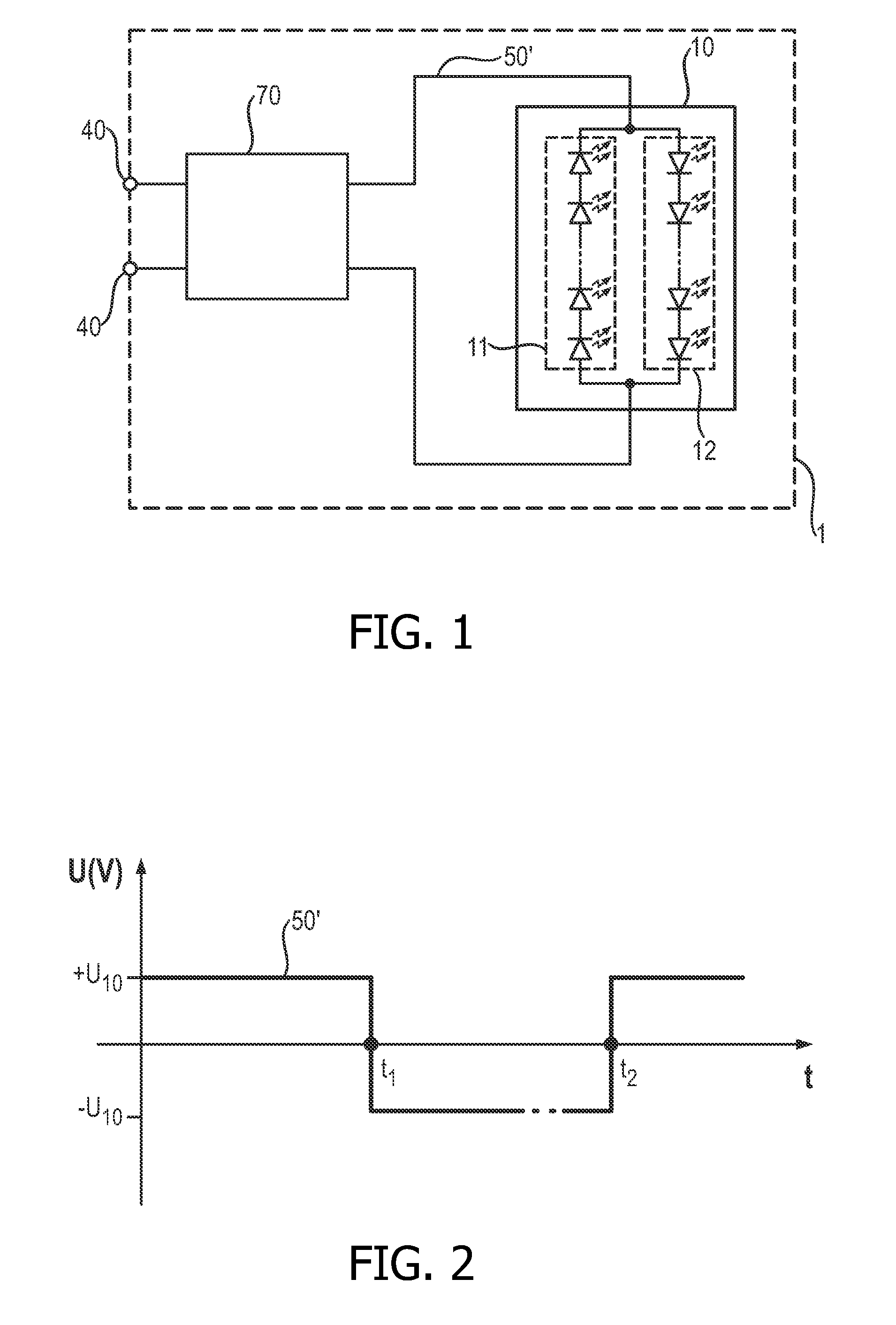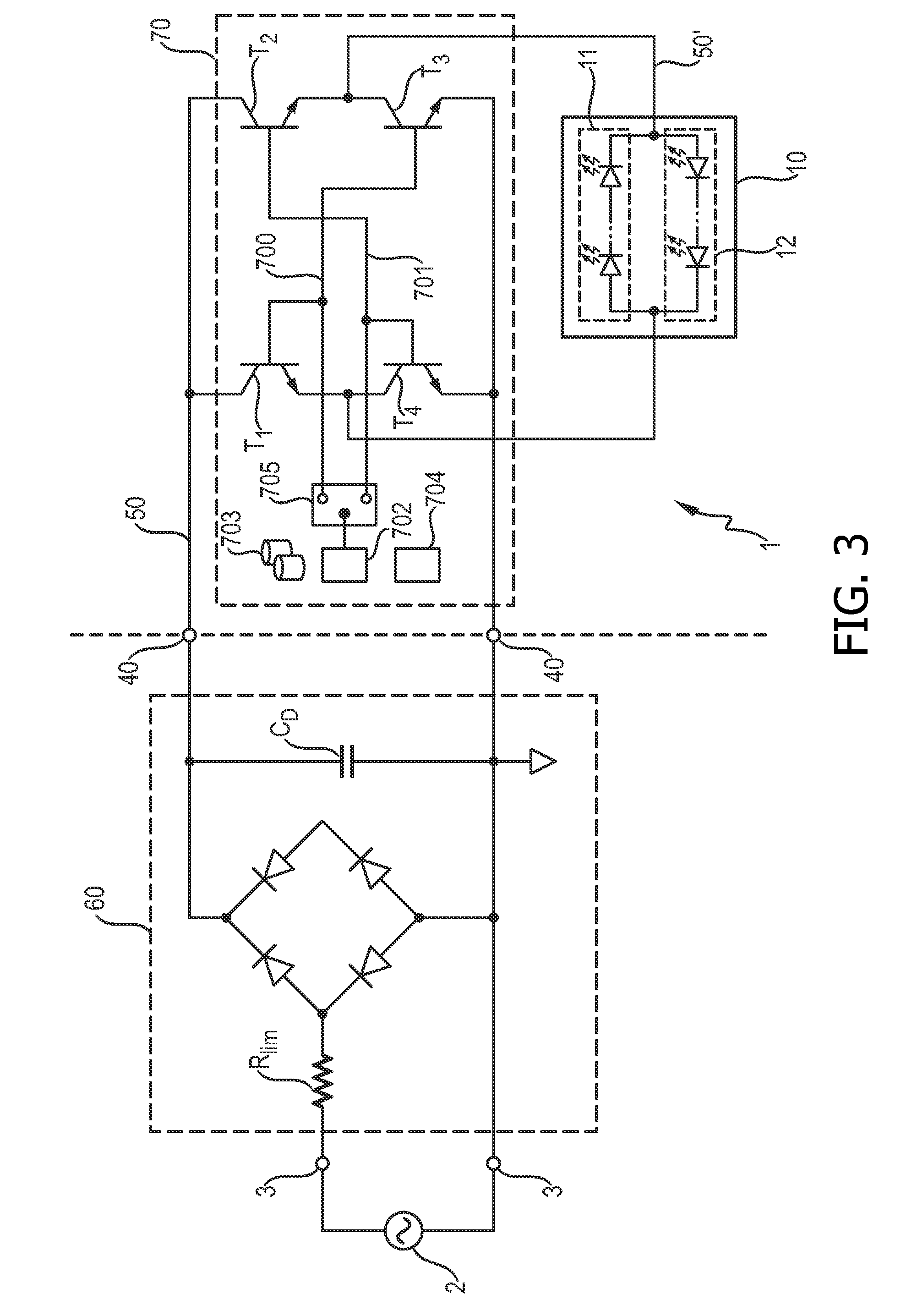LED lighting circuit
a technology of led lighting and circuits, which is applied in the direction of electroluminescent light sources, light sources, electrical equipment, etc., can solve the problems of reducing the lifetime affecting the operation of the ac-led chip, and exhibiting unacceptably high optical flicker
- Summary
- Abstract
- Description
- Claims
- Application Information
AI Technical Summary
Benefits of technology
Problems solved by technology
Method used
Image
Examples
Embodiment Construction
[0049]FIG. 1 shows a simplified circuit diagram in which an AC-LED lighting circuit 1 can be connected, by means of suitable connectors 40, to a DC power supply of constant or fixed polarity. A polarity controller 70 uses the fixed-polarity DC signal to derive or generate a polarity-selectable DC signal 50′ which toggles as required between positive and negative polarity and which is applied to an AC-LED arrangement 10. The AC-LED arrangement 10 essentially comprises two strings 11, 12 of LEDs (represented by the standard circuit symbol), connected inverse parallel so that, for an applied potential, one string conducts while the other string is reverse biased. Of course, as the skilled person will appreciate, the AC-LED arrangement 10 can comprise several chips connected in series or in parallel, depending on the desired light output, and any of these chips can comprise more than two strings.
[0050]FIG. 2 shows an idealized voltage 50′ applied to the AC-LED arrangement 10 of FIG. 1. ...
PUM
 Login to View More
Login to View More Abstract
Description
Claims
Application Information
 Login to View More
Login to View More - R&D
- Intellectual Property
- Life Sciences
- Materials
- Tech Scout
- Unparalleled Data Quality
- Higher Quality Content
- 60% Fewer Hallucinations
Browse by: Latest US Patents, China's latest patents, Technical Efficacy Thesaurus, Application Domain, Technology Topic, Popular Technical Reports.
© 2025 PatSnap. All rights reserved.Legal|Privacy policy|Modern Slavery Act Transparency Statement|Sitemap|About US| Contact US: help@patsnap.com



